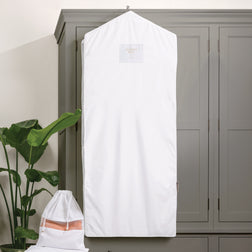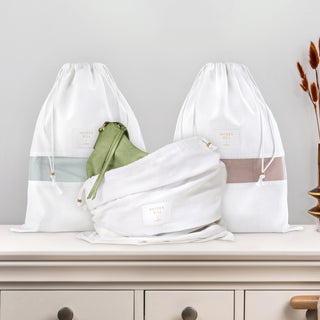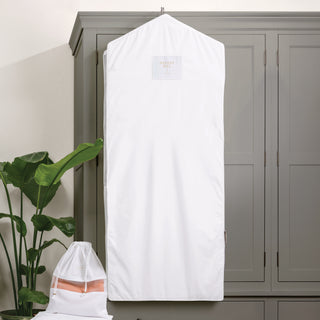Extreme overconsumption and waste are evidence of the fast fashion industry’s dominance. For circular fashion to have a significant impact, some radical new business models and collaborations across the entire production chain are required. Circular fashion’s objective is to ensure that garments are manufactured from environmentally friendly and renewable materials, that clothes are being used to their full potential, and that old clothes are recycled.
If sustainability is a topic that sparks your interest, you've probably heard the term circular fashion. But, you may not know what it means.
The concept of circular fashion was created in opposition to the fast fashion cycle. Fast fashion clothing is designed, created, mass produced, sold, and expected to be disposed of, eventually arriving in a landfill.
Circular fashion, however, is designed, created, produced, and sold, with the expectation that it will be used as long as possible through upcycling and repurposing, until it is recycled and used to make a new item.
Understanding Circular Fashion
Circular fashion takes a more thoughtful look at the manufacturing process of clothing items, as well as what happens to clothing when it can no longer be used. This method was developed and defined by Anna Brismar, owner of Green Strategy.
Items considered to be circular fashion, including clothing, shoes, sportswear, and beddings, are made utilising sustainable materials and manufactured with waste reduction in mind. When circular fashion pieces can no longer be used, these garments are recycled, causing no damage to the environment.
The circular concept aims to reduce the harmful effects of today's fast fashion.
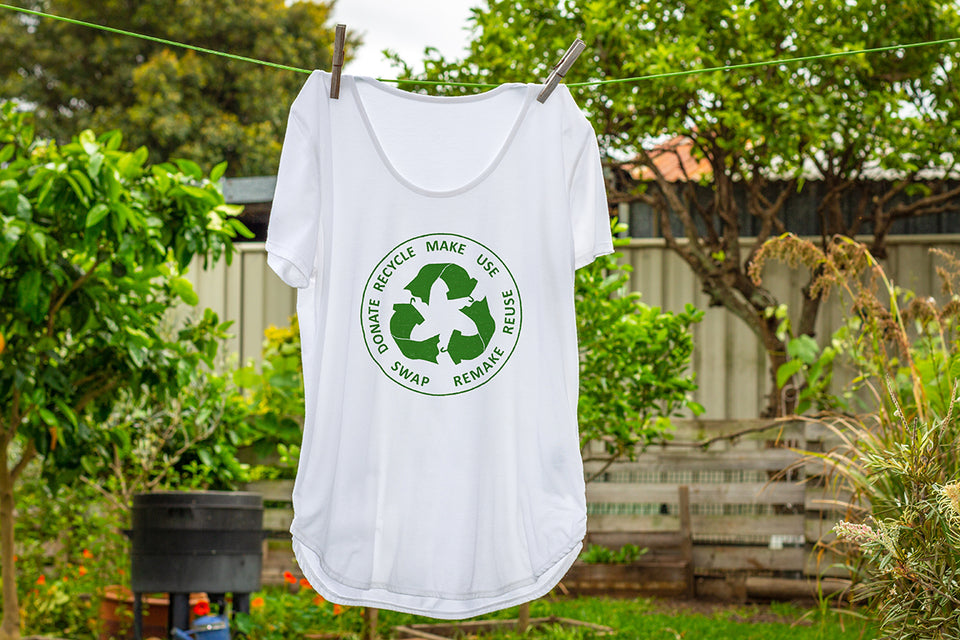
Why is Circular Fashion Important?
It is a well-known fact that the fast fashion industry exploits the people working in the industry and the environment. Excessive energy and water use, harmful chemical and dye use, and greenhouse gas emissions are all severe environmental consequences of fast fashion.
Extreme overconsumption and waste are evidence of the fast fashion industry’s dominance. An increasing number of collections and designs debut every year, many of which are sold at affordable prices. The runway, social media, product websites, and magazines aim to convince us of the importance of staying on-trend in order to maintain one’s relevance and status. And, this emphasis on trends isn’t limited to clothing, but accessories, shoes, furniture, and even home décor as well.
For circular fashion to have a significant impact, some radical new business models and collaborations across the entire production chain are required. Circular fashion’s objective is to ensure that garments are manufactured from environmentally friendly and renewable materials, that clothes are being used to their full potential, and that old clothes are recycled.
The ultimate goal of circular fashion is to ensure that the lifecycle of items does not cause any socioeconomic or environmental harm. In time, the hope is that the fashion industry will exclusively use sustainable materials made for reuse, have practices that protect our ecosystems, and provide fair pay and safe conditions for their workers. At this moment, we are still a long way from that goal.
However, this is not to say that no progress has been made so far. Several world-famous and influential designers have already embraced circular design and are dedicated to promoting circular design.
The Consumer’s Role in Circular Fashion
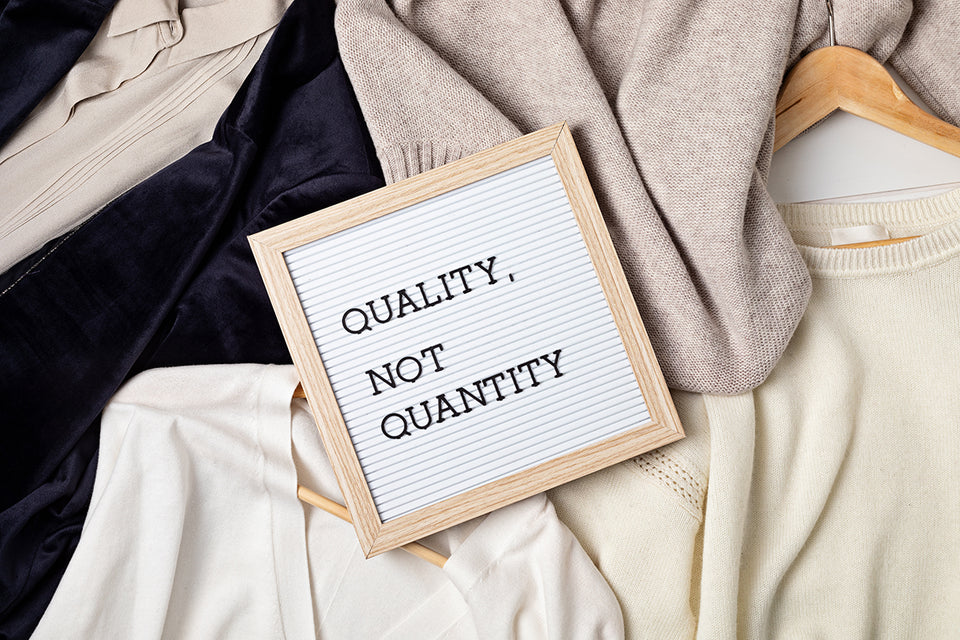
Fast fashion thrives on consumer demand for a steady stream of cheap and disposable, yet stylish and appealing, clothing. This fashion trend has little regard for ethical concerns involved in either the purchase of the new items or the manufacturing process. This demand communicates to businesses that the consumer’s style is more important than any ethical concerns, so as a result, sustainability is low on a company’s priority list. Consumers play a vital role in the expansion and the execution of circular fashion.
When making a purchase, consumers should consider their choices carefully, and prioritise quality above quantity. This goal can easily be accomplished if a customer shifts their focus from the price of the item to its materials and whether it is designed for longevity.
Fortunately, recent studies demonstrate that customers' interest in environmental protection has increased, even if this isn't necessarily always reflected in their general shopping behaviour.
In addition to changing the way we shop, we can take other steps to support circular fashion.
5 Ways to Support Circular Fashion
Recycle your clothes.
Many sustainable clothing stores have their own recycling location that you can use for the clothes you no longer want. Another option is to donate your clothes, provided they are not damaged and still usable, or even resell them.
Invest in quality pieces.
Paying extra for good quality items, and investing in pieces that you will cherish forever despite ever-changing trends, is crucial when purchasing new clothing. Invest in natural, sustainable fabrics, like organic cotton, wool, silk, bamboo, hemp, and linen.
Properly care for your clothes.

Taking good care of your clothes extends their lives and promotes sustainability and circular fashion. For long-term and seasonal storage, place your clothes in breathable garment bags. Between wears, clothes should be stored according to their material and weight.
Visit vintage or second-hand shops.
One way to shop sustainably is to buy and/or sell your clothes at second-hand shops, as well as vintage shops. Another great option, especially for single-occasion outfits, is to rent clothes rather than buy them.
Follow the slow fashion trends.
Shift your interest in fast fashion trends to slow fashion trends. There are a variety of sites and influencers dedicated to promoting slow fashion. And, slow fashion practices such as buying timeless pieces and creating capsule wardrobes are gaining in popularity.
Not all of these tips may appeal to you. But, even making one of these changes can help the circular fashion movement and the environment.
The Retailer’s Role in Circular Fashion
Retailers also play a large part in the advancement of circular fashion. Incentivizing recycling programs, promoting second hand stores for reselling items, and providing an option to rent clothing items are all ideas that minimise unnecessary waste.
Retailers who embrace these practices not only make a clear statement about the need for circular fashion, but also communicate their company values when they aid customers in repairing, returning, renting, and trading in their clothing.

FAQs
How do you make fashion circular?
Circular fashion requires that all clothing items are made from sustainable, raw fabrics that cause no harm to the environment and are easily recycled, reused, repaired, or redesigned. There are a number of ways to use and enjoy these products, without compromising your style or comfort. For example, you might buy something, wear it, and then resell, repair, or redesign it when you no longer want to wear it. That same clothing item is then recycled and transformed into something new. However, it is worth noting that circular fashion is a drastic shift from current practices, and for it to be successful, it must be accepted and embraced by all involved in the design, manufacture, retail, and disposal process.
What is the meaning of circular design?
The goal of the circular design is to create goods that no longer have a linear life cycle with a beginning, middle, and conclusion. Circular design focuses on designing products that are made to be reused and recycled into a new item, rather used and discarded. This ultimate goal of recycling and reusing the piece for other purposes must be kept in mind from the beginning when a product is being designed.
Why do we need circular design?
When it comes to design, shifting to a circular approach might prove to be tricky. Circular design should be a high priority for every producer of goods because its implementation might resolve some of our greater waste issues worldwide. When you start considering waste as a design problem rather than an end result, you can view resources from a whole new perspective.
Our clothes have the ability to communicate our mood, emotions, social standing, lifestyle, religious and political convictions, and so much more. The fact that the apparel and textile industries have played such an important role in our lives is undeniable. Furthermore, in great part due to the introduction of technology to the fashion industry, the current generation is more interested in owning more clothing items than our forefathers ever were.

Unfortunately, our thinking has shifted to the point that one out of every three young women considers their clothes "old" after just wearing them once or twice.
Circular fashion is in direct opposition to this mindset. This method is the answer to how we move away from fast fashion and usher in a more sustainable manufacturing model. But, it will take all of us to make circular fashion practices mainstream. Each of us is important to seeing real change.

